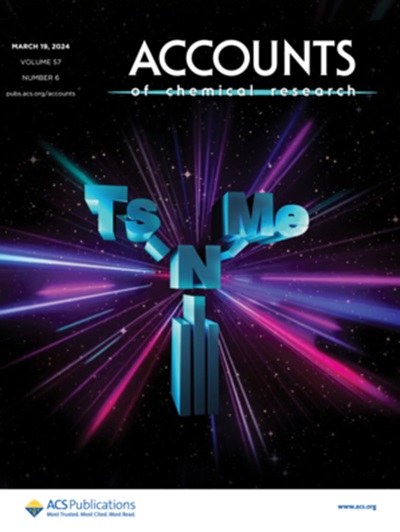电池层状氧化物材料的合理设计
IF 16.4
1区 化学
Q1 CHEMISTRY, MULTIDISCIPLINARY
引用次数: 0
摘要
层状过渡金属(TM)化合物是高效储能可充电电池技术发展的关键。这些材料的历史可以追溯到20世纪70年代,当时插入化学的概念被引入电池。该过程涉及在宿主材料(例如TiS2)层之间插入碱金属离子,而不会造成明显的结构破坏。这一突破为锂离子电池奠定了基础,像LiCoO2这样的材料由于其高能量密度和良好的稳定性而成为其商业成功的关键。然而,尽管有这些优点,这些材料在电池中的广泛应用仍然存在挑战。晶格应变、阳离子迁移和结构崩溃等问题会导致电池容量的快速下降和寿命的缩短。此外,电池的性能经常受到可用材料的特性的限制,特别是在层状氧化物材料中。这推动了对不同成分材料的探索。组成和结构化学之间的关系对于确定可逆容量、氧化还原活性和相变至关重要,但预测这一关系仍然是一个重大挑战,特别是对于复杂的组成物。本文章由计算机程序翻译,如有差异,请以英文原文为准。

Rational Design of Layered Oxide Materials for Batteries
Layered transition metal (TM) compounds are pivotal in the development of rechargeable battery technologies for efficient energy storage. The history of these materials dates back to the 1970s, when the concept of intercalation chemistry was introduced into the battery. This process involves the insertion of alkali-metal ions between the layers of a host material (e.g., TiS2) without causing significant structural disruption. This breakthrough laid the foundation for Li-ion batteries, with materials like LiCoO2 becoming key to their commercial success, thanks to their high energy density and good stability. However, despite these advantages, challenges remain in the broader application of these materials in batteries. Issues such as lattice strain, cation migration, and structural collapse result in rapid capacity degradation and a reduction in battery lifespan. Moreover, the performance of batteries is often constrained by the properties of the available materials, particularly in layered oxide materials. This has driven the exploration of materials with diverse compositions. The relationship between composition and structural chemistry is crucial for determining reversible capacity, redox activity, and phase transitions, yet predicting this remains a significant challenge, especially for complex compositions.
求助全文
通过发布文献求助,成功后即可免费获取论文全文。
去求助
来源期刊

Accounts of Chemical Research
化学-化学综合
CiteScore
31.40
自引率
1.10%
发文量
312
审稿时长
2 months
期刊介绍:
Accounts of Chemical Research presents short, concise and critical articles offering easy-to-read overviews of basic research and applications in all areas of chemistry and biochemistry. These short reviews focus on research from the author’s own laboratory and are designed to teach the reader about a research project. In addition, Accounts of Chemical Research publishes commentaries that give an informed opinion on a current research problem. Special Issues online are devoted to a single topic of unusual activity and significance.
Accounts of Chemical Research replaces the traditional article abstract with an article "Conspectus." These entries synopsize the research affording the reader a closer look at the content and significance of an article. Through this provision of a more detailed description of the article contents, the Conspectus enhances the article's discoverability by search engines and the exposure for the research.
 求助内容:
求助内容: 应助结果提醒方式:
应助结果提醒方式:


